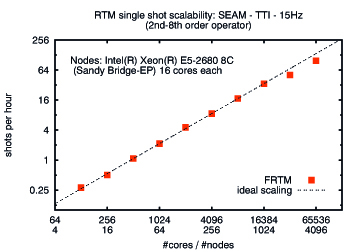The demand for even faster, more effective, and also energy-saving computer clusters is growing in almost every sector. Our asynchronous programming model Global address space Programming Interface (GPI) might become a key building block towards realizing the next generation of supercomputers.
»High Performance Computing« is one of the key technologies for numerous applications that we have come to take for granted – everything from Google searches to weather forecasting and from climate simulation to bioinformatics requires an ever increasing amount of computing resources. Big data analysis additionally is driving the demand for even faster, more effective, and also energy-saving computer clusters.
The number of processors per system has now reached the millions and looks set to grow even faster in the future. Yet, something has to a large extend remained unchanged over the past 20 years. That is the programming model for these supercomputers. The Message Passing Interface (MPI) ensures that the microprocessors in the distributed systems can communicate. For some time now, however, it has been reaching the limits of its capability.


